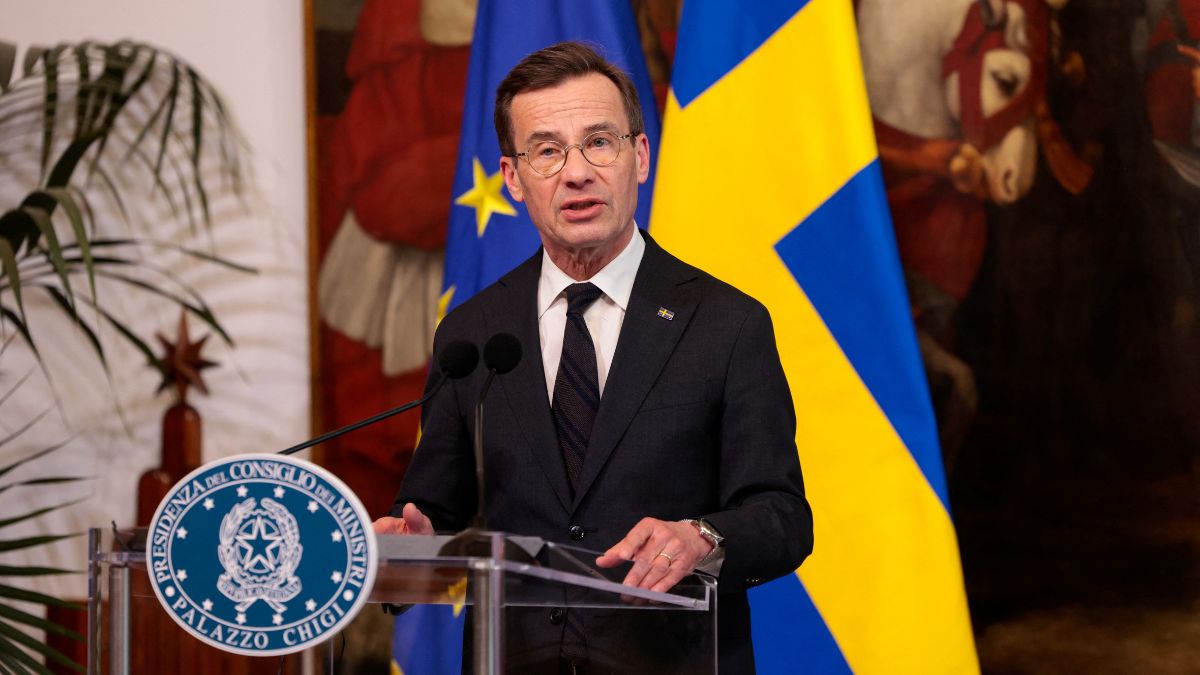Editor’s Note: The tenth edition of Raisina Dialogue, India’s flagship conference on geopolitics and geo-economics, is now underway in Delhi. Firstpost, which has partnered with the Observer Research Foundation (ORF) for the summit, brings you this piece on Sweden’s defence preparedness amid discussions on changing world order at the gathering
Sweden’s military equipment exports reached an all-time high in 2024, totalling 29 billion kronor ($2.9 billion), marking a 63 per cent increase from the previous year.
The surge in exports reflects the escalating security concerns following Russia’s invasion of Ukraine, according to data from the Inspectorate of Strategic Products (ISP).
Approximately 70 per cent of Sweden’s defence exports went to the 39 countries that maintain security and defence partnerships with Sweden. The United Arab Emirates emerged as the top recipient, followed by the United States and Brazil.
Sweden also significantly increased state donations and industry sales to Ukraine, doubling the number of permits granted for military aid.
Saab AB, the country’s leading defence contractor and manufacturer of Gripen fighter jets and Globaleye airborne early warning systems, has been a primary beneficiary of the rising global demand for military equipment.
As the Raisina Dialogue 2025 kicks off in New Delhi , we take a look at how Sweden as the newest Nato member is changing and boosting its defence landscape vis-à-vis its responsibilities to the security alliance and the war in Ukraine.
How Sweden’s defence is changing as a Nato member
In its first year as a Nato member, Sweden has taken decisive steps to integrate with the alliance’s defence strategy. For the first time, Swedish Gripen combat aircraft will be deployed outside national borders , stationed in Poland to support Nato air defence missions.
The Swedish Air Force (SwAF) will participate in two missions in Poland: one focused on protecting Nato’s Security Assistance and Training for Ukraine (NSATU), and another supporting Nato’s Enhanced Air Policing (eAP) efforts over Polish airspace.
The Gripens will be supplemented by airborne and maritime surveillance assets, including the Saab 340/ASC 890 Erieye early warning aircraft and the Lockheed Martin C-130H Hercules transport aircraft.
Additionally, Sweden has reinforced Nato’s presence on its eastern flank by deploying 550 troops to Latvia as part of a multinational battalion led by Canada . The deployment is designed to strengthen Nato’s deterrence against potential aggression in the region.
This force is one of eight forward-deployed battalions stationed along Nato’s eastern flank, four of which were established following Russia’s invasion of Ukraine in 2022.
In September 2024, Sweden also announced plans to establish a forward land force presence in Finland, assuming the role of framework nation for Nato forces there.
This marks a significant expansion of Sweden’s military commitments and reflects its close defence relationship with Finland. While details of the deployment are still being finalised, the forces are expected to be operational within the next one to two years.
How Sweden is expanding its defence spending and production
Sweden has rapidly increased its defence budget in response to heightened security threats. The 2025 budget stands at 142 billion kronor, nearly twice the allocation of 2022. Of this, 60 billion kronor is designated for procurement of military equipment and infrastructure.
By 2030, Sweden’s defence spending is projected to reach 186 billion kronor, though experts anticipate further increases due to evolving security challenges.
Currently ranked as the 13th-largest arms exporter in the world, Sweden’s defence industry is expanding production at an accelerated pace.
At its Karlskrona-based Kockums shipyard, Saab is constructing two A26 Blekinge-class submarines, designed for operations in the Baltic Sea’s shallow waters where US submarines face limitations.
Sweden’s defence capabilities extend beyond naval and aerial assets. The country is also a leader in satellite manufacturing and hosts Esrange Space Center, Europe’s only orbital launch site, further enhancing Nato’s strategic positioning.
Sweden plans to spend about 2.4 per cent of its GDP on defence in 2025, with an increase to 2.6 per cent by 2028, writes Jason C Moyer, program associate & research director, Transatlantic Security, Global Europe Program, in an article for Wilson Center.
This spending surge places Sweden among Nato’s top contributors, with real-dollar expenditures surpassing all other Nordic countries. Estimates suggest that by 2024, Sweden will rank as the eighth-highest defence spender in the alliance.
How Sweden has given Nato capabilities in the Arctic
Sweden’s accession to Nato has fundamentally reshaped the alliance’s northern defence strategy. With all five Nordic nations now Nato members, regional defence coordination has strengthened significantly. The integration of Sweden has allowed Nato to enhance strategic planning, particularly in the Arctic and Baltic regions.
Following recent sabotage incidents targeting undersea infrastructure , Sweden has committed three additional warships to bolster Nato’s presence in the Baltic Sea. The Swedish Navy is actively engaged in hybrid threat deterrence, leveraging its expertise in Baltic operations.
Moreover, Sweden is contributing to the UK-led Joint Expeditionary Force’s new operation, “Nordic Warden,” aimed at securing critical undersea infrastructure and countering Russian activities in the region.
As an Arctic nation, Sweden also brings new capabilities to Nato’s operations in extreme climates. In December 2024, Sweden participated in record-breaking Nato cold-weather exercises, demonstrating the alliance’s readiness for Arctic defence scenarios.
With Sweden serving as a logistical hub for operations in the Baltics and Finland, Nato’s northern defence posture has been significantly strengthened.
Additionally, Sweden’s geographical position enhances Nato’s logistical capabilities. The country’s road and rail networks provide critical infrastructure for moving troops and equipment between Northern Europe and the Baltic states in the event of a conflict. This role is crucial for reinforcing Nato’s deterrence posture against potential Russian aggression.
Sweden will also provide over 1.4 billion Swedish kronor ($137.7 million) to Ukraine for reconstruction, development and urgent humanitarian assistance. Described as Sweden’s largest-ever civilian aid package, the funding will support rebuilding damaged infrastructure, mine clearance efforts and training for healthcare workers.
With inputs from agencies


)

)
)
)
)
)
)
)
)



